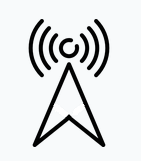
Up to now, thanks to the grow up of the WireLess applications, is necessary know some basic concept regarding the antennas.
First: the reference antenna is the dipole (see below).
The principal dipole caracteristic is that it has gain equal to 0 (zero).
All other antennas are some meccanical trasformation of the dipole.
Second: a minimum antenna length must be λ/4.
In many application use a λ/4 antenna is not possible and are used a ceramic antennas or a custom antennas design on pcb.
Remember that this means to lost efficiency (distance) on your wireless system.
Third: do not forget to create a good ground reference for your antenna.
Fourth: is very important match the impedance from antenna to the transceiver to avoid lost of power (SWR).
For this reason is necessary use a balun to match the impedance and Choke to avoid RF returns and/or parasitic coupling with the antenna drop cable.
Fifth: reduce the Kbps (Kbit per second – Data Rate) means, in general, increase the S/N of your receiver and the distance covered.
It’s clear that each wireless system, is a compromise between the five points mentioned above.
If you don’t have experience to make antenna is strongly recommended to use an external consultant with a good antenna experiences.
Remember that antenna is your unique interface with the wireless world.
How to calculate a 1/4 wave antenna
c = light speed, that is 300,000 km/s or, in meters, 300.000.000 meters
f = frequency in Hz, and 868 MHz is equivalent to 868.000.000 Hz
λ (Greek letter lambda) = wavelength resulting at the frequency = c/f
Example:
—–f=868Mhz
—–the λ=c/f = 300000000/868000000 = 0,3456221198156682 meters
—–the 1/4 wave antenna measure: 0,3456221198156682 / 4 = 0,0864 meters -> 8,64 cm
I suggest you to consult the links below.
